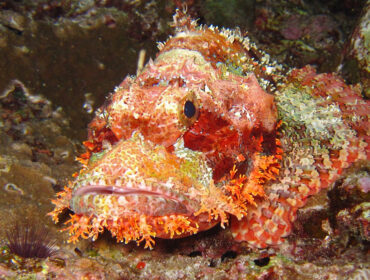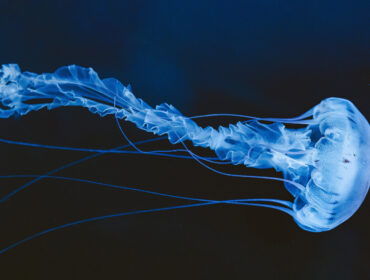Ask any diver to tell you about the Portuguese Man-of-War, and they will probably wince, regardless of if they’ve ever actually encountered one. This sea creature has a well-deserved reputation of delivering brutal consequences to the unlucky victim who strays into its streaming tentacles. The venom injected from the tiny barbs on its tentacles have caused the recorded deaths of at least three people, and victims usually bear lasting physical scars, reminiscent of jagged lightning where the tentacles have come in contact with skin, never mind the emotional and psychological impact!
But despite their evils, these marine organisms are actually quite fascinating. A common conception among the non-diving public is that the Portuguese Man-of-War is a type of jellyfish, which is false. It is actually a colony comprised of millions of organisms, each responsible for a function of the entire colony’s survival. These animals are called siphonophores, and their large order includes creatures like pyrosomes and corals. In the case of the Portuguese Man-of-War, there are four separate colonies working together:
- Sail This is the part of the animal that resembles a balloon, allowing it to float on the surface in the ocean breeze. It operates much like a human lung, taking in gas that is secreted by another colony in order to stay afloat. An integrated siphon allows the Man-of-War to quickly expel the gas and submerge briefly.
- Defense There are three additional colonies of polyps that watch over three distinctive tasks, yet are all bundled together in an indiscernible pattern. The defense colony is comprised of the long, trailing tentacles that are typically about 30 feet in length, but have been recorded at lengths up to 165 feet! These are the tentacles to beware of, since they serve as the Man-of-War’s “fishing tackle.” Fish and other creatures that are small enough to get entangled meet their demise in the embrace of these deadly tendrils.
- Feeding The defense tentacles have contractile cells that pull the prey in closer to the feeding colony. These tentacles are shorter and clustered together, and once the prey is within range, each tentacle surrounds the body and begins secreting enzymes to break down and digest its nutrients.
- Reproduction This colony’s sole responsibility is reproduction, and therefore these are the shortest tentacles of all, protected among the longer and stronger colonies that surround it.
These graceful killers inhabit many of the world’s tropical regions, and their carnivorous nature often puts them in the path of unsuspecting swimmers and beachgoers year after year. It does have a few natural predators, like the loggerhead sea turtle and a certain type of nudibranch, but it is not uncommon to have many of these creatures wash ashore in summer months. It is important to note that the vinegar cure for most jellyfish stings will not work, and medical attention must be sought quickly. Rather, apply salt water and very hot water to the affected area. The heat will help to neutralize the pain by denaturing the toxins. If you see one washed up on the beach, take a good look at it, but don’t touch it or step on it to avoid any accidental injuries. Their venom can remain active even when the animal has been washed up for days!




